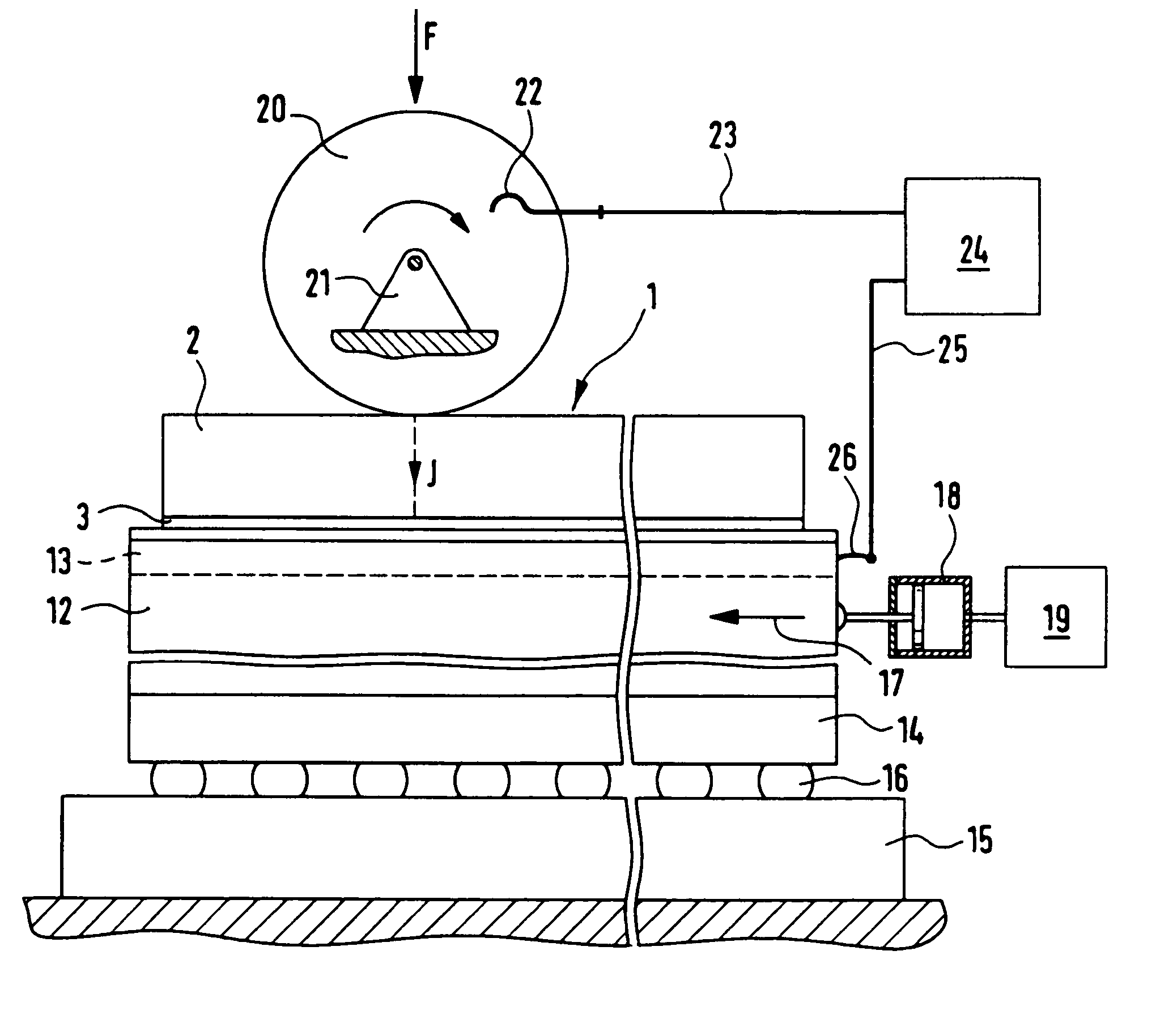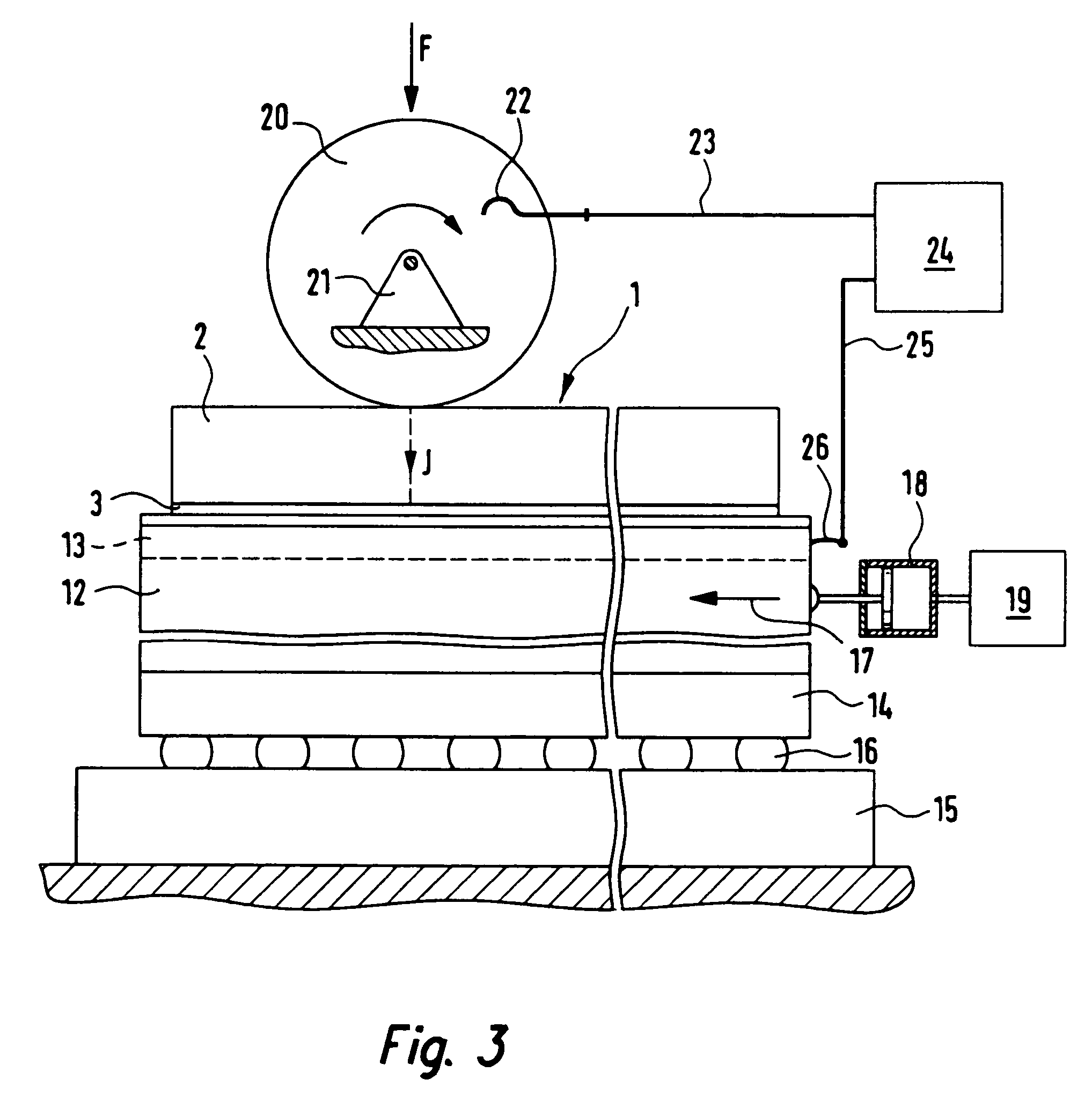Method and system for resistance seam welding of a foil and at least one foil support of a fuel cell system
a fuel cell and foil technology, applied in the direction of resistance welding apparatus, hydrogen/synthetic gas production, organic chemistry, etc., can solve the problems of pressing and rolling movement of the roller electrode to damage the thin foil, and achieve the effect of increasing the permeation ra
- Summary
- Abstract
- Description
- Claims
- Application Information
AI Technical Summary
Benefits of technology
Problems solved by technology
Method used
Image
Examples
Embodiment Construction
[0016]The schematic representation of a welding group 1 in FIG. 1 shows, in top view and sectional view, a foil frame or foil support 2 and a foil 3 which are welded together for use in a fuel cell system. Weld seam 4 of width b runs peripherally and concentrically to foil frame 2 which has the same outer dimensions as foil 3. Foil frame 2 has a thickness d1=200 μm and is made of a ferritic material such as austenitic steel or nickel. Foil 3 has the thickness d2=10 μm. Thickness d2 of foil 3 may vary depending on the application. Further practical thicknesses are 18 μm or 25 μm. Foil 3 is suited for hydrogen separation in a reformer module of the fuel cell system and is made, for example, of a palladium- and copper-containing alloy. Other alloys are also possible. Weld seam 4 connects foil 3 and foil frame 2 so tight together that there is a leak rate of smaller than 10−7 mbar*liter / second or that less than 40 ppm of carbon monoxide is present in the anode gas flow.
[0017]FIG. 2 show...
PUM
| Property | Measurement | Unit |
|---|---|---|
| time period | aaaaa | aaaaa |
| time period | aaaaa | aaaaa |
| time period | aaaaa | aaaaa |
Abstract
Description
Claims
Application Information
 Login to View More
Login to View More - R&D
- Intellectual Property
- Life Sciences
- Materials
- Tech Scout
- Unparalleled Data Quality
- Higher Quality Content
- 60% Fewer Hallucinations
Browse by: Latest US Patents, China's latest patents, Technical Efficacy Thesaurus, Application Domain, Technology Topic, Popular Technical Reports.
© 2025 PatSnap. All rights reserved.Legal|Privacy policy|Modern Slavery Act Transparency Statement|Sitemap|About US| Contact US: help@patsnap.com



